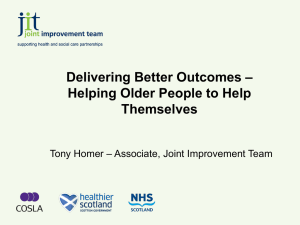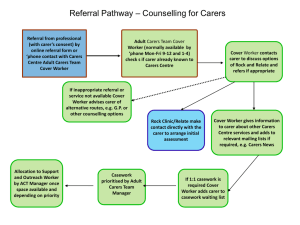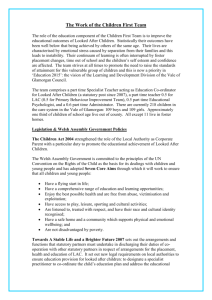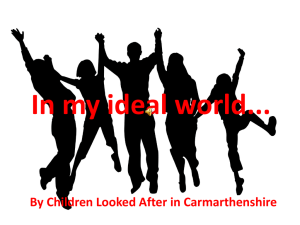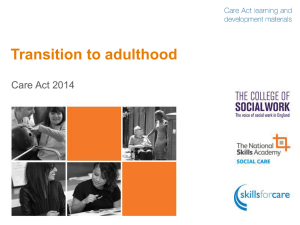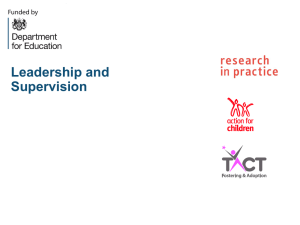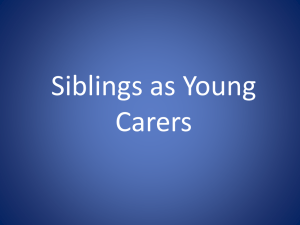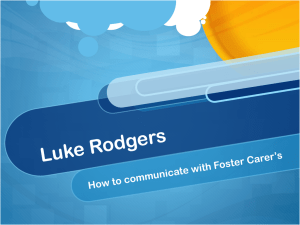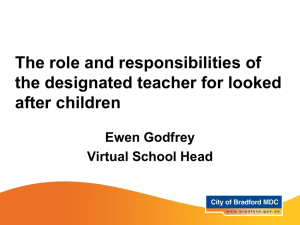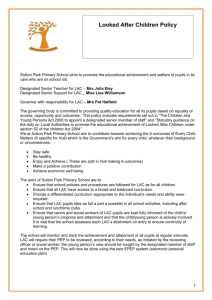Looking into Looked After Children
advertisement
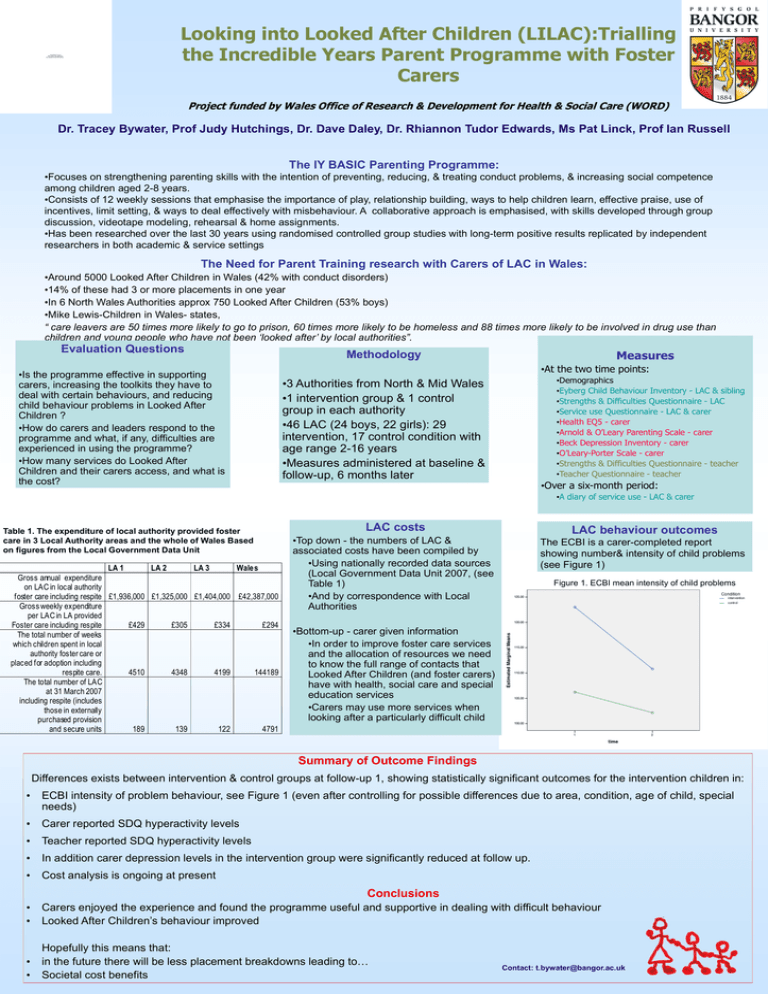
Looking into Looked After Children (LILAC):Trialling the Incredible Years Parent Programme with Foster Carers QuickTime™ and a TIFF (LZW) decompressor are needed to see this picture. Project funded by Wales Office of Research & Development for Health & Social Care (WORD) Dr. Tracey Bywater, Prof Judy Hutchings, Dr. Dave Daley, Dr. Rhiannon Tudor Edwards, Ms Pat Linck, Prof Ian Russell The IY BASIC Parenting Programme: •Focuses on strengthening parenting skills with the intention of preventing, reducing, & treating conduct problems, & increasing social competence among children aged 2-8 years. •Consists of 12 weekly sessions that emphasise the importance of play, relationship building, ways to help children learn, effective praise, use of incentives, limit setting, & ways to deal effectively with misbehaviour. A collaborative approach is emphasised, with skills developed through group discussion, videotape modeling, rehearsal & home assignments. •Has been researched over the last 30 years using randomised controlled group studies with long-term positive results replicated by independent researchers in both academic & service settings The Need for Parent Training research with Carers of LAC in Wales: •Around 5000 Looked After Children in Wales (42% with conduct disorders) •14% of these had 3 or more placements in one year •In 6 North Wales Authorities approx 750 Looked After Children (53% boys) •Mike Lewis-Children in Wales- states, “ care leavers are 50 times more likely to go to prison, 60 times more likely to be homeless and 88 times more likely to be involved in drug use than children and young people who have not been ‘looked after’ by local authorities”. Evaluation Questions Measures Methodology •At the two time points: •Is the programme effective in supporting carers, increasing the toolkits they have to deal with certain behaviours, and reducing child behaviour problems in Looked After Children ? •How do carers and leaders respond to the programme and what, if any, difficulties are experienced in using the programme? •How many services do Looked After Children and their carers access, and what is the cost? •Demographics •Eyberg Child Behaviour Inventory - LAC & sibling •Strengths & Difficulties Questionnaire - LAC •Service use Questionnaire - LAC & carer •Health EQ5 - carer •Arnold & O’Leary Parenting Scale - carer •Beck Depression Inventory - carer •O’Leary-Porter Scale - carer •Strengths & Difficulties Questionnaire - teacher •Teacher Questionnaire - teacher •3 Authorities from North & Mid Wales •1 intervention group & 1 control group in each authority •46 LAC (24 boys, 22 girls): 29 intervention, 17 control condition with age range 2-16 years •Measures administered at baseline & follow-up, 6 months later •Over a six-month period: •A diary of service use - LAC & carer Table 1. The expenditure of local authority provided foster care in 3 Local Authority areas and the whole of Wales Based on figures from the Local Government Data Unit LA 1 LA 2 LA 3 Wales Gross annual expenditure on LAC in local authority foster care including respite £1,936,000 £1,325,000 £1,404,000 £42,387,000 Gross weekly expenditure per LAC in LA provided Foster care including respite £429 £305 £334 £294 The total number of weeks which children spent in local authority foster care or placed for adoption including respite care. 4510 4348 4199 144189 The total number of LAC at 31 March 2007 including respite (includes those in externally purchased provision and secure units 189 139 122 4791 LAC costs LAC behaviour outcomes •Top down - the numbers of LAC & associated costs have been compiled by •Using nationally recorded data sources (Local Government Data Unit 2007, (see Table 1) •And by correspondence with Local Authorities The ECBI is a carer-completed report showing number& intensity of child problems (see Figure 1) Figure 1. ECBI mean intensity of child problems •Bottom-up - carer given information •In order to improve foster care services and the allocation of resources we need to know the full range of contacts that Looked After Children (and foster carers) have with health, social care and special education services •Carers may use more services when looking after a particularly difficult child Summary of Outcome Findings Differences exists between intervention & control groups at follow-up 1, showing statistically significant outcomes for the intervention children in: • ECBI intensity of problem behaviour, see Figure 1 (even after controlling for possible differences due to area, condition, age of child, special needs) • Carer reported SDQ hyperactivity levels • Teacher reported SDQ hyperactivity levels • In addition carer depression levels in the intervention group were significantly reduced at follow up. • Cost analysis is ongoing at present Conclusions • • Carers enjoyed the experience and found the programme useful and supportive in dealing with difficult behaviour Looked After Children’s behaviour improved • • Hopefully this means that: in the future there will be less placement breakdowns leading to… Societal cost benefits Contact: t.bywater@bangor.ac.uk
